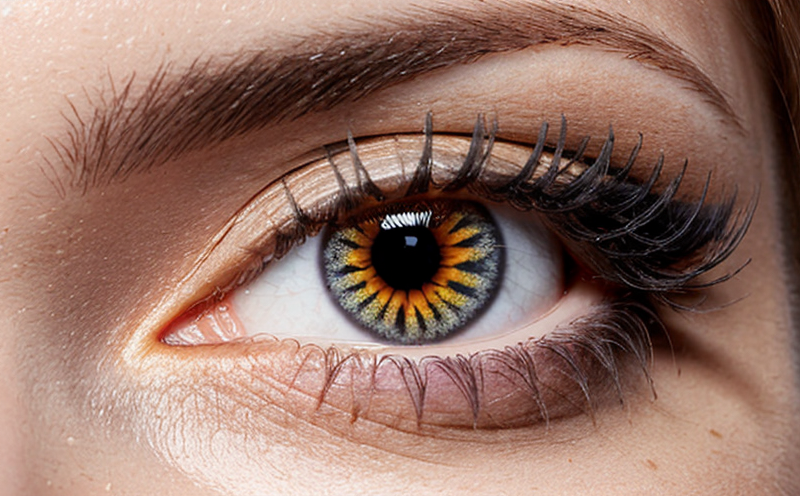In Vitro Eye Irritation Testing with Reconstructed Human Cornea Model
Testing the ocular safety of cosmetic products is a critical aspect of product development and regulatory compliance. The traditional animal testing methods have been widely used, but they are increasingly being replaced by more ethical and efficient in vitro alternatives. One such method gaining prominence is the use of reconstructed human cornea models (RHCMs) for evaluating eye irritation potential.
The RHCM offers a robust alternative to animal testing by providing a three-dimensional model that closely mimics the physiological properties of human corneal tissue. This technology allows for accurate prediction of ocular toxicity without the ethical concerns associated with live animal use. The reconstructed cornea is designed to replicate the structure and function of the human cornea, making it an ideal tool for assessing the potential for eye irritation.
The testing process typically involves exposing the RHCM to a sample of the cosmetic product for a specified period under controlled conditions. After exposure, various parameters are measured, including cellular viability, inflammation markers, and other indicators of tissue damage or stress. The results provide valuable insights into the safety profile of the product, helping manufacturers make informed decisions about ingredient selection and formulation.
This method is not only more ethical but also offers several advantages over traditional animal testing. It is faster, more cost-effective, and provides a consistent and reproducible outcome. Additionally, RHCMs can be used to test multiple samples simultaneously, increasing throughput and efficiency in the development process.
The reconstructed human cornea model serves as an excellent tool for quality managers, compliance officers, R&D engineers, and procurement teams looking to ensure product safety and regulatory compliance. By leveraging this technology, they can reduce reliance on animal testing while maintaining rigorous standards of safety and efficacy.
Applied Standards
| Standard | Description |
|---|---|
| ISO 10993-10 | This international standard specifies the use of reconstructed human cornea models for assessing ocular irritation potential. |
| ASTM E2845 | This American Society for Testing and Materials standard provides guidelines for in vitro testing using RHCMs. |
| OECD Guidelines for the Testing of Chemicals | The Organization for Economic Co-operation and Development has endorsed the use of RHCMs as a validated method for ocular toxicity assessment. |
Scope and Methodology
The scope of in vitro eye irritation testing using reconstructed human cornea models is broad, encompassing a wide range of cosmetic products. This includes lotions, creams, gels, serums, mousses, and any other formulation that comes into direct contact with the ocular surface.
The methodology involves several key steps:
- Preparation of RHCMs: The reconstructed corneas are prepared according to standard protocols. This typically involves culturing human corneal-like cells on a matrix substrate until they form a three-dimensional structure that mimics the natural cornea.
- Product Exposure: The cosmetic sample is applied to the prepared RHCMs for a set period, usually ranging from 4 hours to overnight.
- Data Collection: Following exposure, various endpoints are measured. These include changes in cell viability using assays like MTT or Alamar Blue, measurement of pro-inflammatory cytokines such as IL-1β and TNF-α, and other indicators of tissue stress.
- Interpretation and Reporting: The collected data is analyzed to determine the potential for ocular irritation. A comprehensive report is generated detailing the findings and their implications for product safety.
The reconstructed human cornea model provides a reliable and reproducible method for assessing eye irritation, ensuring that cosmetic products are safe for consumer use.
Industry Applications
In vitro eye irritation testing using reconstructed human cornea models finds extensive application across the cosmetics industry. This includes:
- New Product Development: Ensuring that new cosmetic formulations do not cause harmful effects on the eyes.
- Ingredient Evaluation: Assessing individual ingredients for their potential to induce eye irritation.
- Formulation Optimization: Adjusting product formulations based on test results to enhance safety and reduce risk.
- Regulatory Compliance: Meeting the requirements of various regulatory bodies around the world.
- Ethical Consideration: Reducing reliance on animal testing, thereby aligning with ethical standards in the industry.
The reconstructed human cornea model is a versatile tool that supports these applications by providing accurate and reliable data. This ensures that cosmetic products are not only safe but also meet the highest standards of quality and compliance.





